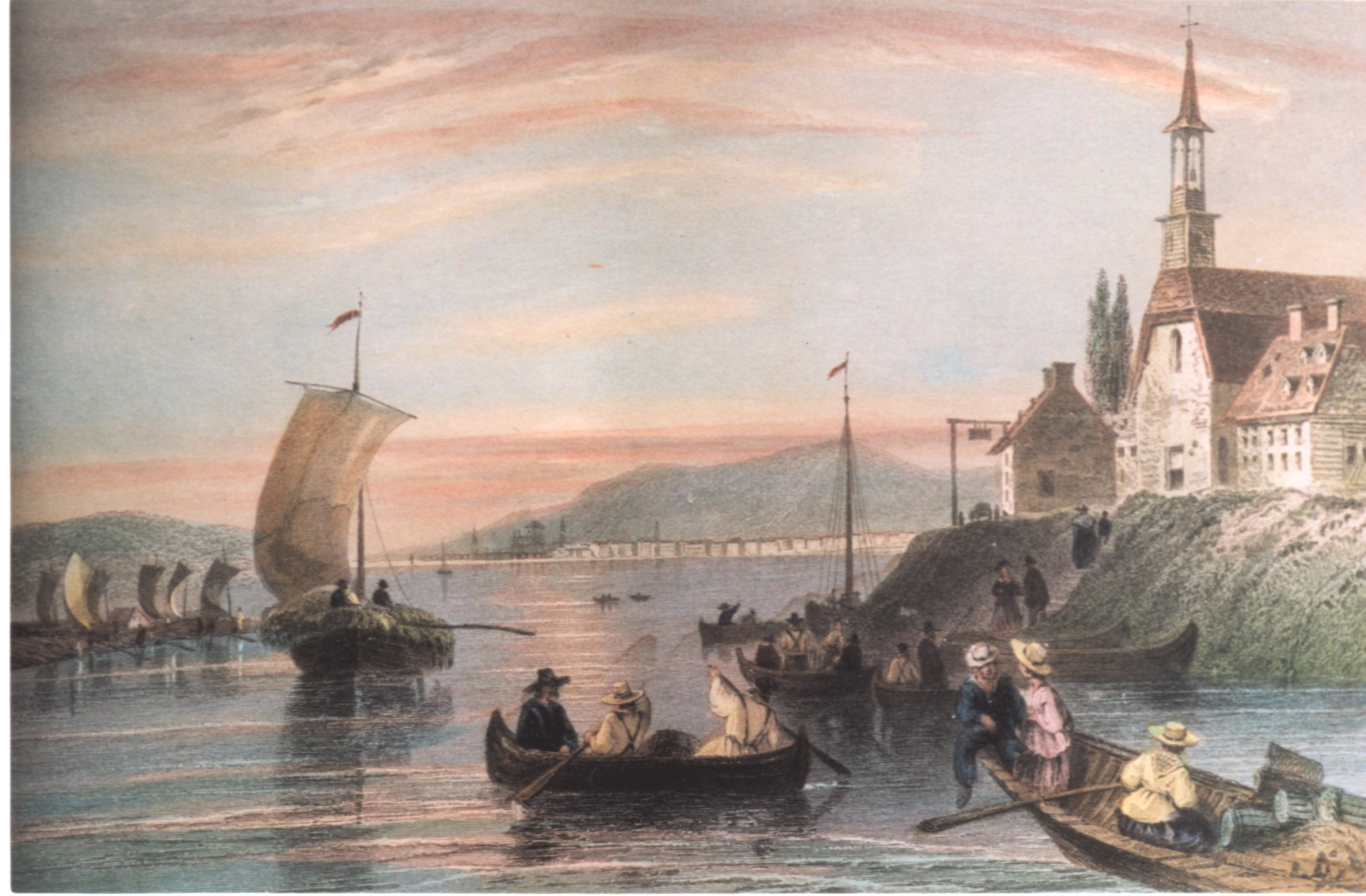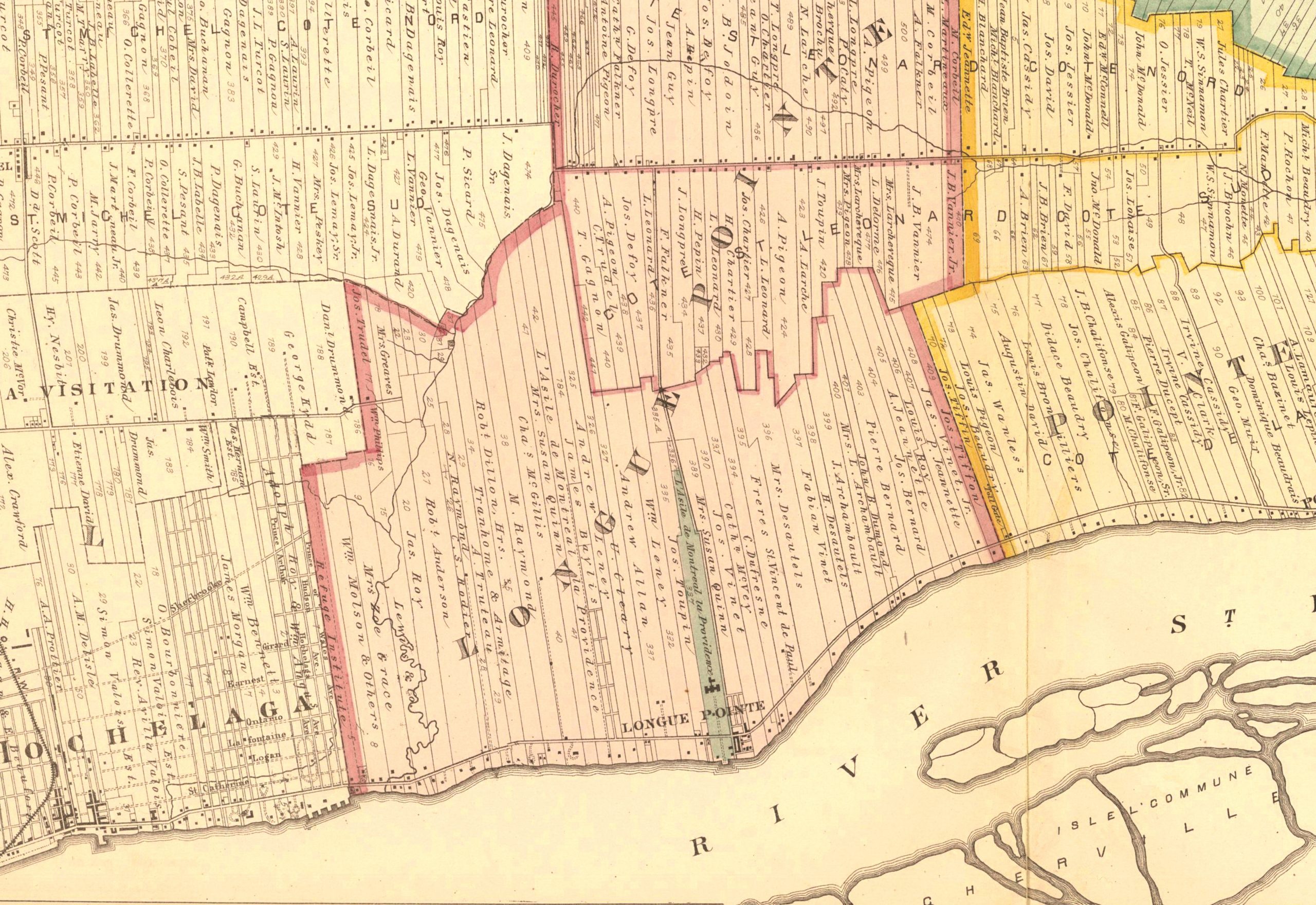Longue-Pointe’s Origins

A painting by William Bartlett of the Saint-François-d’Assise Church, built in 1724.
Library and Archives Canada
The history of Longue-Pointe began in 1665 when the Sulpicians, the seigneurs of the Island of Montreal, started granting land in the east. From 1674 to 1719, its inhabitants belonged to the Pointe-aux-Trembles parish. 1722 saw the foundation of the Saint-François-d’Assise parish. The stone church facing the river was attended by the local population, as well as some parishioners from Côte-Saint-Léonard, a concession a little further up north still in want of a place of worship. The 1825 census revealed a handful of craftspeople and traders within the locality who had their shops near the parish church. The population of 791 was clustered around the town centre.

A map of the Longue-Pointe parish in 1879 by Henry W. Hopkins.
Bibliothèque et Archives nationales du Québec
In the second half of the 19th century, a few streets were opened north and south of the public road (Notre-Dame Street) as larger institutions started coming to Longue-Pointe. Already present in the region since 1846, the Sisters of Providence founded the Saint-Jean-de-Dieu Hospital in 1873, as the Brothers of Charity were opening the Saint-Benoît-Joseph-Labre Asylum to treat men of the wealthy class.

The first Saint-Jean-de-Dieu Hospital, built in 1875 and which burnt down in 1890.
Sisters of Providence Archives
Towards the end of the end of the 19th century, the town of Longue-Pointe became a major holiday destination. To escape the hectic pace of the city, upper-middle-class families owned villas “in the country”, meaning around the periphery of the Island of Montreal. Longue-Pointe became the home of such famous historical figures as Sir George-Étienne Cartier who would stay at his villa named Limoilou. The Dominion Park, opened from 1906 to 1937, was an important entertainment centre in Longue-Pointe. Famous for its state-of-the-art rides, it boasted being the largest amusement park in the world.


